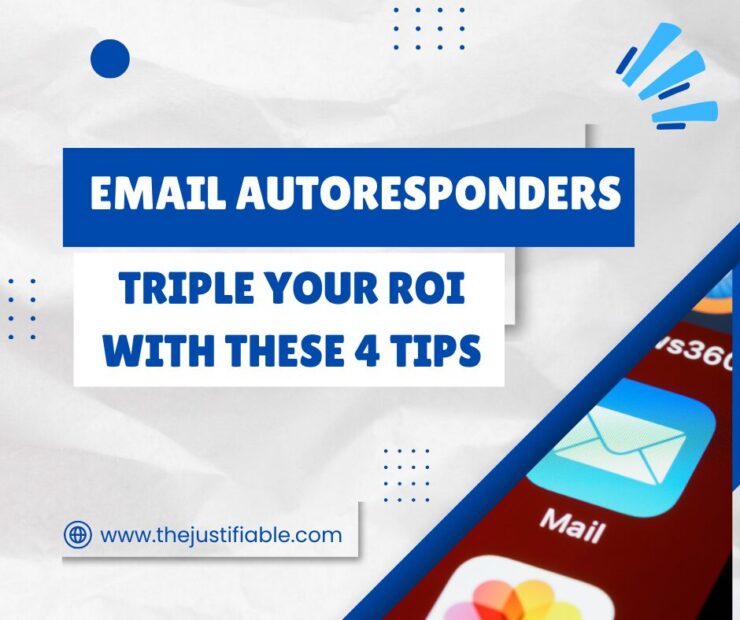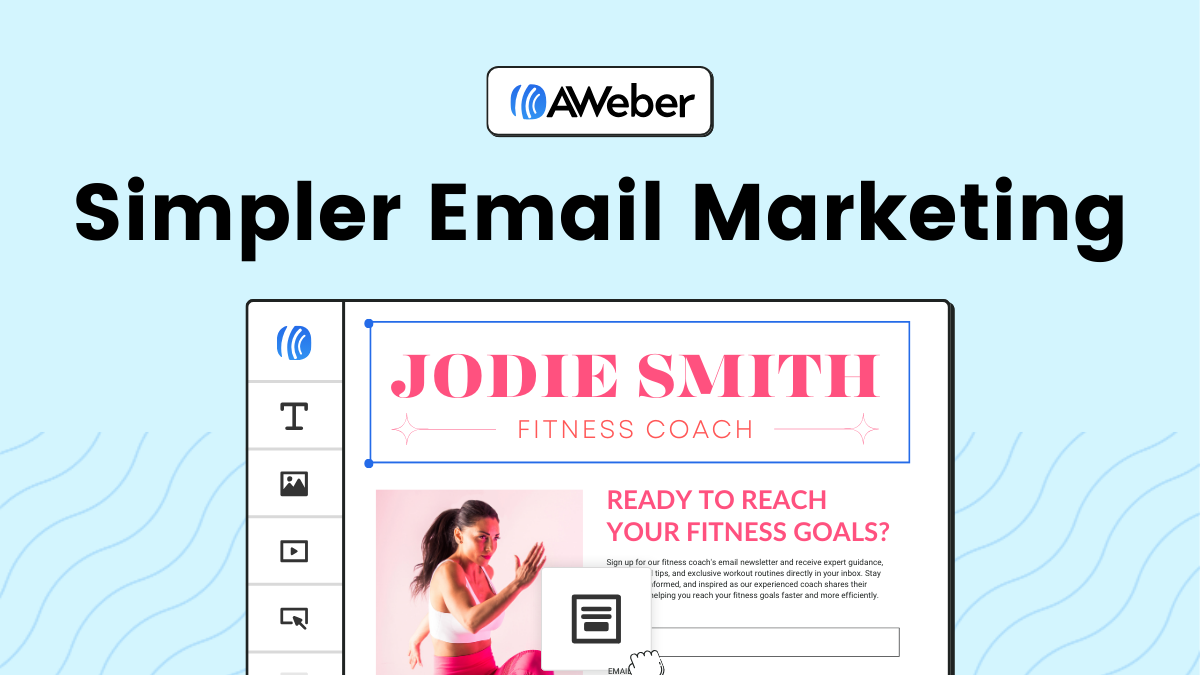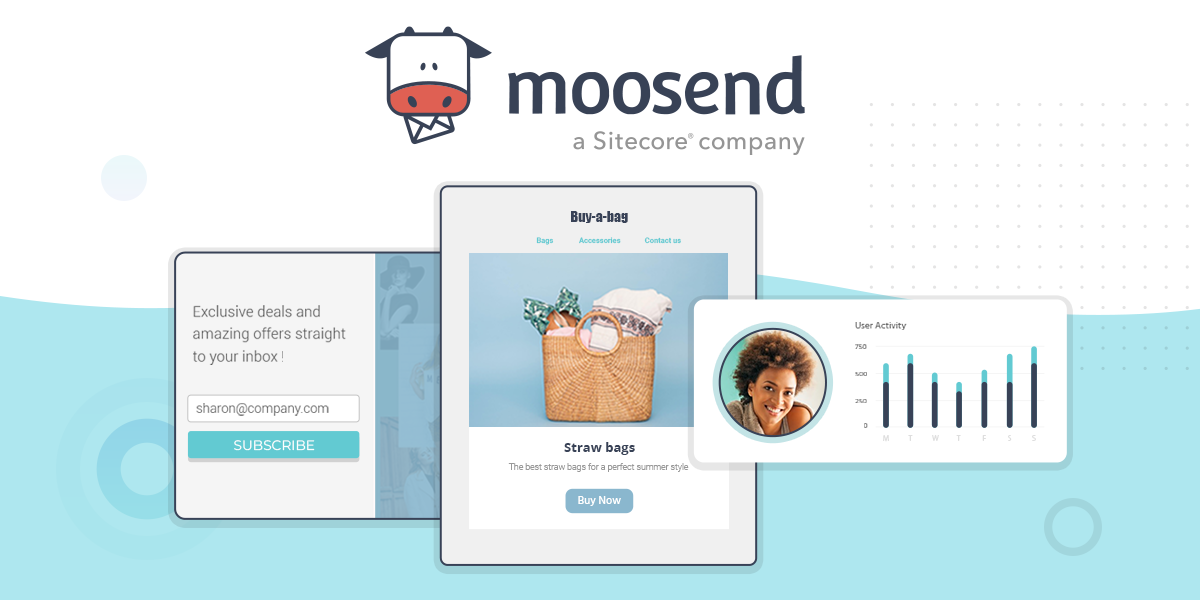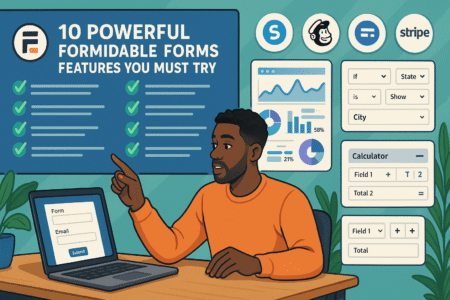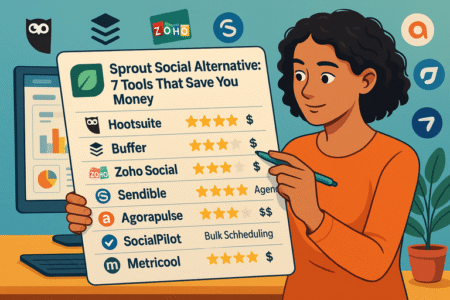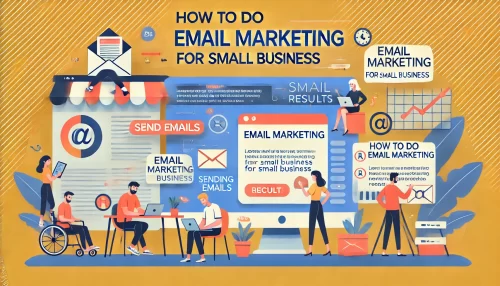Table of Contents
Navigating the world of digital marketing without email autoresponders is like trying to sail a ship without a compass. Essential for directing your strategy towards success, email autoresponders stand at the helm, guiding your marketing efforts to uncharted territories of engagement and profitability. At the heart of this powerful tool lies the potential to triple your return on investment (ROI), transforming how you connect with your audience and turning casual browsers into loyal customers.
With email autoresponders, you’re not just sending messages; you’re cultivating relationships. These automated assistants work around the clock, ensuring that each subscriber receives a personalized experience, from welcome emails that greet new sign-ups with warmth to follow-up messages that keep your brand at the forefront of their minds. By segmenting your audience and tailoring content to fit their interests, you’re speaking directly to their needs, increasing the likelihood of conversion.
5 Key Metrics to Measure Email Autoresponder Success
Did you know that for every dollar spent on email marketing, you can expect an average return of $42? This staggering statistic underscores the unmatched potential of email autoresponders in your digital marketing strategy. However, harnessing this potential requires a keen understanding of key performance indicators (KPIs) that gauge the success of your email autoresponder campaigns.
Engagement rates, starting with open and click-through rates, stand as the cornerstone of measuring effectiveness. They provide a clear picture of how compelling your subject lines are and how relevant your content is to your audience. But don’t stop there. Delve deeper into conversion rates to see how well your emails persuade subscribers to take the desired action, whether it’s making a purchase or signing up for a webinar.
Bounce rates also offer invaluable insights, highlighting issues with your email list’s quality or email deliverability problems. A high bounce rate could signal that it’s time to clean your list or improve your segmentation. Meanwhile, the growth rate of your email list tells a story of your autoresponder’s ability to attract new subscribers, a vital factor for long-term success.
Lastly, consider the overall ROI of your email marketing efforts. This metric consolidates all others, showing the direct impact of your email autoresponders on your bottom line. By focusing on these five key metrics, you can refine your approach, ensuring that your email marketing strategy not only resonates with your audience but also contributes significantly to your company’s growth.
The Top 3 Email Autoresponders of 2024: Features & Benefits
In the ever-evolving landscape of digital marketing, choosing the right email autoresponder can be a game-changer for your business. As 2024 unfolds, three platforms have risen above the rest, distinguishing themselves through innovative features and robust benefits that cater to diverse marketing needs.
First on the list is AutoResponder, renowned for its AI-driven personalization capabilities. This platform uses advanced algorithms to tailor content to individual preferences, significantly boosting engagement rates. Its intuitive analytics dashboard also makes it easy to track performance and optimize campaigns in real time.
Next, we have MailStreamMax, which stands out for its exceptional user experience and automation workflows. Designed with user-friendliness in mind, it allows marketers to set up complex email sequences effortlessly, ensuring timely and relevant communication with subscribers. Moreover, its segmentation tools are second to none, enabling precise targeting that enhances the relevance of your messages.
Last but not least, EngageFlow offers unparalleled integration possibilities. Whether you’re looking to connect with CRM software, e-commerce platforms, or social media channels, EngageFlow bridges the gap, creating a cohesive marketing ecosystem. This integration fosters a seamless flow of information across channels, enriching your data and amplifying your marketing efforts.
1. Optimize Your Welcome Series to Captivate New Subscribers
Have you ever wondered what makes a welcome email series truly captivating? Or how can you ensure that your first interaction with new subscribers sets the tone for a lasting relationship? Optimizing your welcome series is not just about making a great first impression; it’s about laying the foundation for engagement and loyalty that can significantly boost your email marketing ROI.
A well-crafted welcome series is your first opportunity to communicate your brand’s value and establish a connection with your audience. But what elements make it effective? Personalization is key. Addressing subscribers by name and tailoring content based on their interests or behaviors can transform a standard welcome message into a personalized introduction to your brand.
Timing also plays a crucial role. The initial email should be sent immediately after subscription, ensuring your brand stays top of mind. Following up with additional, strategically timed emails can keep the momentum going, providing more information about your products or services, sharing valuable content, or offering a special discount to encourage a first purchase.
Content quality cannot be overstressed. Each email in the series should offer genuine value, whether it’s insightful tips, engaging stories, or exclusive offers. The goal is to enrich your subscribers’ lives in some way, making them look forward to receiving your emails.
Finally, clear calls to action (CTAs) are essential. Whether you’re encouraging subscribers to complete their profiles, check out your latest blog post, or take advantage of a special offer, your CTAs should be compelling and clear, guiding subscribers on what to do next.
The First 48 Hours: Crafting Irresistible Welcome Emails
What happens in the first 48 hours after someone subscribes to your list? This critical window is your golden opportunity to make a strong, positive impact with your email autoresponders. Crafting irresistible welcome emails isn’t just about saying “hello” — it’s about starting a conversation that could last for years. But how do you ensure your welcome emails stand out in a crowded inbox?
The secret lies in understanding your audience deeply and addressing their needs and interests right from the start. Personalization goes beyond just inserting a name; it’s about creating content that feels like it was made just for them. Share a story about your brand, introduce them to your community, and give them a peek behind the curtain. This builds trust and fosters a sense of belonging.
Visuals also play a crucial role. A well-chosen image or a clean, attractive layout can make your email more engaging and memorable. But, the real magic happens with your message. Be clear about the value you’re offering, whether it’s exclusive content, a special discount, or insightful tips. This value proposition should be compelling enough to encourage new subscribers to engage further with your brand.
Lastly, setting expectations is crucial. Let your subscribers know what kind of content they can expect and how often. This transparency builds trust and reduces the chances of your emails being ignored or, worse, marked as spam.
Analyzing Open Rates: How to Make a Lasting First Impression
Open rates are the first indicator of whether your email strategy is resonating with your audience. But what does it take to ensure your emails aren’t just opened but also read and acted upon? Making a lasting first impression with your email marketing starts with understanding the factors that influence open rates.
Your subject line is the gatekeeper. It needs to be intriguing, clear, and relevant. Avoid clickbait tactics that can disappoint readers and damage trust. Instead, use actionable language, personalization, and a touch of curiosity to encourage opens. Testing different subject lines can help you understand what resonates best with your audience.
Preheader text is another tool at your disposal, often underutilized. This snippet of text can complement your subject line, providing additional context or a compelling reason to open the email. Think of it as an extension of your subject line — another chance to persuade subscribers to engage with your content.
Segmentation can significantly impact open rates as well. By segmenting your list, you can tailor your messaging to fit different segments of your audience, making your emails more relevant and increasing the likelihood of them being opened. Remember, a one-size-fits-all approach rarely works in email marketing.
Engagement doesn’t stop at the open. Your email’s content must deliver on the promises made in your subject line and preheader. Provide clear value, whether through informative content, entertainment, or exclusive offers. A compelling call-to-action (CTA) is essential, guiding readers on what to do next.
2. Segment Your Audience for Personalized Email Journeys
“Personalization is not a trend, it’s a marketing tsunami.” This statement perfectly encapsulates the monumental shift towards tailored content in the realm of email marketing. Segmenting your audience for personalized email journeys isn’t just an option; it’s a necessity for those looking to elevate their email autoresponders from good to unforgettable.
Understanding the unique preferences and behaviors of your subscribers allows you to craft email content that resonates on a personal level. But where do you start? The journey begins with data. From demographic information to past purchase behavior and engagement patterns, every piece of data is a puzzle piece in the grand scheme of personalized marketing.
The power of segmentation lies in its ability to transform a generic email blast into a series of thoughtfully curated messages for different segments of your audience. Imagine sending a product recommendation email that aligns perfectly with the recipient’s interests or a discount offer on an item they’ve been eyeing. The result? A significant uplift in engagement, conversions, and, ultimately, customer loyalty.
But segmentation doesn’t stop at personalizing content. It also involves tailoring the timing and frequency of your emails. Some segments may prefer weekly updates, while others might engage more with monthly newsletters. The key is to listen to your audience, understand their preferences, and adjust your strategy accordingly.
Boost Engagement with Data-Driven Segmentation Strategies
In the quest to make every email count, data-driven segmentation strategies stand out as the beacon of hope for marketers everywhere. The question is no longer whether to segment your audience, but how to do it effectively to boost engagement and drive results. With the right approach, segmentation turns a wide net into a series of precise casts, each tailored to engage a specific group of subscribers in the most meaningful way.
The foundation of a successful segmentation strategy lies in the data you collect. Behavioral data, purchase history, demographic information, and engagement levels all provide insights into your audience’s preferences and behaviors. By analyzing this data, you can identify patterns and trends that inform your segmentation strategy, enabling you to deliver content that resonates deeply with each segment.
One of the most powerful aspects of data-driven segmentation is the ability to personalize not just the content of your emails but also the timing and frequency. For instance, sending a re-engagement email to a subscriber who hasn’t opened your emails in the last three months requires a different approach than an email welcoming a new subscriber.
Similarly, recognizing and celebrating milestones, such as the anniversary of a subscription or a recent purchase, can significantly enhance the personal touch of your communications.
The beauty of segmentation is that it allows for continuous optimization. By regularly reviewing your segments and their performance, you can refine your strategy, testing new segments and adjusting your approach based on what the data tells you. This ongoing process ensures that your email marketing remains dynamic, relevant, and engaging, keeping your audience interested and active over time.
Case Study: A 45% Increase in Click-Through Rate with Segmented Campaigns
Imagine the impact of seeing your email campaign’s click-through rate (CTR) soar by an impressive 45%. This isn’t just a dream scenario; it’s a reality for a leading e-commerce brand that embraced data-driven segmentation with open arms. By analyzing their extensive customer database, the brand identified several key segments based on purchase history, browsing behavior, and engagement levels.
For one segment, known as the “Frequent Shoppers,” the brand crafted personalized email campaigns featuring new arrivals and exclusive offers based on their past purchase behavior. Another segment, “Window Shoppers,” received emails highlighting best-selling products and customer reviews to nudge them towards making their first purchase.
The results were staggering. The “Frequent Shoppers” segment showed a 45% increase in CTR, driven by the relevancy of the offers and the personalization of the content. Meanwhile, the “Window Shoppers” segment saw a significant uplift in conversion rates, with many making their first purchase after receiving the targeted emails.
3. Leverage Advanced Automation Features for Maximum Impact
Navigating the world of email marketing without leveraging advanced automation features is like trying to sail the ocean without a compass. You might eventually get where you’re going, but you’ll miss out on the most direct and effective routes that could lead you to untapped treasures. In the vast sea of digital communication, automation stands as your guiding star, enabling you to reach your audience with precision, efficiency, and personalization at scale.
Advanced automation goes beyond the basics of sending out scheduled newsletters. It’s about harnessing the power of technology to create a dynamic and responsive email strategy. This approach can include triggering emails based on specific actions, such as website visits, product views, or past purchase behavior, ensuring that your message is always relevant and timely.
But how can you make the most of these automation features? It starts with a deep dive into your data. Understanding your audience’s behavior and preferences allows you to set up triggers that resonate with their journey. For example, a cart abandonment email sent within hours of a missed purchase can gently nudge customers back to complete their transactions, often with a higher success rate than generic follow-up emails.
Segmentation and personalization are also at the heart of effective automation. By creating detailed customer profiles, you can automate highly personalized emails that speak directly to individual needs and interests. Imagine sending a birthday discount to a subscriber or a special offer to someone who has shown interest in a particular product category. These touches make your audience feel valued and understood, significantly boosting engagement and loyalty.
Furthermore, testing and optimization are crucial components of leveraging automation for maximum impact. A/B testing different email elements, from subject lines to call-to-action buttons, allows you to refine your approach based on real data. This continuous cycle of testing, learning, and adjusting ensures that your email marketing strategy remains effective and responsive to changing audience needs.
Trigger-Based Emails: Converting Actions into Opportunities
In the digital marketing symphony, trigger-based emails are the soloists that command attention. These automated emails, activated by specific actions or behaviors, resonate deeply with the audience, turning every click and interaction into a chance to connect and convert. Imagine having a conversation where every response is perfectly timed and relevant; that’s the power of trigger-based email marketing.
The beauty of trigger-based emails lies in their ability to deliver the right message at the right time. From a welcome email that greets new subscribers to a thank-you message following a purchase, each email feels personal and thoughtful. This isn’t just communication; it’s about building a relationship. For instance, sending a discount offer to a customer who has been browsing your site but hasn’t made a purchase can be the nudge they need to convert.
The effectiveness of trigger-based emails is rooted in relevance and timing. An abandoned cart email sent a few hours after a customer leaves your site can remind them of what they’ve left behind, often leading to a completed purchase. Similarly, a re-engagement email to someone who hasn’t interacted with your brand in months can reignite interest and bring them back into the fold.
To truly harness the potential of trigger-based emails, it’s essential to continuously analyze and refine your triggers. This means not only tracking the performance of each email but also staying attuned to the changing needs and behaviors of your audience. The goal is to create a dynamic, responsive email strategy that grows with your audience, always delivering value and relevance at every touchpoint.
Integrating AI: Predictive Analytics for Enhancing Email Strategies
As we sail into the future of email marketing, artificial intelligence (AI) and predictive analytics serve as the wind in our sails, propelling us toward unprecedented personalization and efficiency. By integrating AI into your email strategy, you unlock the ability to anticipate the needs and interests of your audience, crafting emails that are not just personalized but prescient.
Predictive analytics uses historical data and AI algorithms to forecast future behaviors and preferences, allowing marketers to tailor their email campaigns with uncanny accuracy. This could mean predicting which products a customer is most likely to purchase next, the best time of day to send emails for optimal open rates, or even identifying which subscribers are at risk of disengaging.
The power of AI in email marketing extends beyond just predictions. It can also automate complex segmentation, content personalization, and optimization processes, making your email campaigns smarter and more effective. For example, AI can analyze the language and imagery that resonates best with different segments of your audience, automatically tailoring your emails to match these preferences.
Integrating AI into your email strategy also means embracing a culture of continuous learning and adaptation. As the AI learns from each campaign, your email strategy becomes more refined, delivering better results with each iteration. This dynamic approach ensures that your email marketing remains at the cutting edge, always one step ahead in understanding and meeting the needs of your audience.
4. Refine Your Call-to-Action for Higher Conversion Rates
Did you know that a single word change in your call-to-action (CTA) can boost your click-through rates by over 10%? In the vast ocean of digital marketing, CTAs are the lighthouses guiding customers towards your desired action, be it subscribing to a newsletter, making a purchase, or downloading a guide. Refining your CTA is not just about polishing your words; it’s about clarifying your message and making it irresistible to your audience.
A powerful CTA transcends the simple “click here” or “submit” button. It encapsulates value, urgency, and relevance, speaking directly to the desires and needs of your audience. The secret to crafting a compelling CTA lies in understanding what motivates your subscribers and how your offer solves their problems or enriches their lives.
Personalization plays a crucial role in elevating your CTAs. Tailoring your call-to-action based on the subscriber’s behavior, preferences, or stage in the customer journey can significantly increase its effectiveness. For example, a CTA for a first-time visitor might focus on learning more about your products, while for a returning customer, it might promote items related to their previous purchases.
Testing and optimization are key to refining your CTAs for higher conversion rates. A/B testing different versions of your call-to-action, from the wording and color to the placement and size, can reveal what resonates most with your audience. This data-driven approach ensures that your CTAs are not just guesses but strategic tools crafted to maximize engagement and conversions.
Crafting Compelling CTAs: A Data-Driven Approach
In the digital landscape, a call-to-action (CTA) is not just a button or a line of text; it’s the climax of your marketing narrative, the moment when a visitor decides to take the plunge and engage with your brand. Crafting compelling CTAs goes beyond intuition; it requires a data-driven approach that aligns with the desires and needs of your audience. But how do you turn data into action?
The journey begins with understanding your audience’s behavior. Analyzing how users interact with your site provides insights into what drives them to take action. Are they motivated by discounts, exclusive access, or informative content? Once you understand these motivations, you can tailor your CTAs to mirror these interests, significantly increasing their effectiveness.
Personalization is the next step in crafting your CTAs. Utilizing data about your users’ past interactions, preferences, and purchase history allows you to create personalized messages that resonate on a deeper level. A CTA that feels like it’s speaking directly to the user, addressing their specific interests or pain points, is far more likely to be clicked on than a generic one-size-fits-all message.
Clarity and urgency are also crucial components of a compelling CTA. Your message should be clear and concise, telling users exactly what they’ll get by taking action. Coupled with a sense of urgency—through limited-time offers or exclusive access—you can propel users from hesitation to action.
A/B Testing Your CTAs: Strategies for Double-Digit Growth
A/B testing your CTAs isn’t just a best practice—it’s a necessity for anyone looking to achieve double-digit growth in their conversion rates. This methodical approach allows you to compare different versions of your CTAs to see which one performs better, providing a clear path to optimizing your conversions. But where do you start?
First, identify the elements of your CTA you want to test. This can range from the text and color to the shape and placement on your page. Even subtle changes can lead to significant differences in performance. By changing one element at a time, you can determine which variables have the most impact on user behavior.
Setting clear goals is essential for successful A/B testing. Are you looking to increase click-through rates, boost newsletter signups, or drive more sales? Having a specific objective in mind allows you to measure the effectiveness of each variation accurately and make data-driven decisions about which version to implement.
It’s also important to give your tests enough time to collect meaningful data. Depending on your traffic volume, this could range from a few days to several weeks. Rushing the process can lead to inaccurate conclusions and missed opportunities for optimization.
Monitoring and Optimizing Your Email Autoresponders
Believe it or not, your email autoresponders are telling you a story, and not just any story, but the secret tale of your marketing’s success and areas for improvement. In the bustling world of digital marketing, these automated messages are more than just a set-and-forget tool; they’re a goldmine of insights waiting to be tapped.
The real magic happens not when you launch your autoresponder series, but when you dive deep into monitoring and optimizing these campaigns for stellar performance.
Key Performance Indicators to Watch in Your Email Campaigns
Navigating the waters of email marketing requires a keen eye on certain beacons, known as Key Performance Indicators (KPIs), which illuminate the path to success. Open rates, click-through rates (CTR), and conversion rates stand as the triumvirate of email marketing metrics, each offering a glimpse into the hearts and minds of your audience. But the story doesn’t end here.
Bounce rates and list growth rate also play pivotal roles in shaping your strategy. A high bounce rate may signal that it’s time to clean your email list, while a stagnant or declining list growth rate suggests it’s time to revamp your subscription strategy. Engagement doesn’t just happen; it’s cultivated by understanding and responding to these indicators.
Continuous Improvement: The Cycle of Testing and Tweaking
The path to perfection is paved with tests and tweaks. The world of email autoresponders is dynamic, with audience preferences and behaviors constantly evolving. Standing still is not an option for those seeking to maximize the potential of their email campaigns. A/B testing emerges as the champion of this continuous improvement process, allowing marketers to experiment with different elements of their emails, from subject lines and content to CTA buttons and send times.
This cycle of testing and tweaking is not a one-off event but an ongoing journey of discovery. Each test provides valuable lessons, whether it’s learning that personalization increases open rates or that a specific CTA color boosts clicks. The key is to remain agile, adapting your strategy based on real-world data and insights.
Future-Proofing Your Email Autoresponder Strategy
In a digital world that never sleeps, future-proofing your email autoresponder strategy is like charting a course through ever-shifting seas. The horizon of email marketing is always evolving, with new technologies, consumer behaviors, and regulatory landscapes emerging. To stay ahead, your strategy needs not just to adapt but to anticipate, ensuring that your email marketing efforts remain effective, relevant, and compliant.
Upcoming Trends in Email Automation for 2025 and Beyond
As we look towards 2025 and beyond, several key trends are set to redefine the landscape of email automation. Personalization, already a cornerstone of effective email campaigns, will evolve beyond basic segmentation, harnessing the power of AI to deliver hyper-personalized content. Imagine emails that adapt in real-time, reflecting the recipient’s current interests, recent activities, or even the weather in their city.
Interactivity within emails is another trend gaining momentum. Interactive elements like polls, quizzes, and sliders not only enrich the user experience but also provide marketers with additional data to refine their targeting and content. Moreover, the integration of email with other marketing tools and platforms will deepen, enabling a seamless customer journey across all touchpoints.
Sustainability will also come into focus. As consumers become more environmentally conscious, the carbon footprint of digital activities, including email marketing, will be scrutinized. Marketers will need to balance frequency and volume with sustainability concerns, perhaps through more efficient targeting and segmentation to reduce waste.
Building a Scalable Email Marketing Ecosystem with Autoresponders
Creating a scalable email marketing ecosystem with autoresponders is about building a flexible foundation that can grow and adapt with your business. This means investing in robust platforms that offer advanced segmentation, integration capabilities, and analytics tools. It’s not just about managing your current email list but about having the infrastructure in place to accommodate future growth—both in size and sophistication.
A scalable ecosystem also emphasizes the importance of quality over quantity. As your list grows, maintaining high engagement rates becomes more challenging but no less critical. This requires a strategic approach to content, timing, and personalization, driven by ongoing analysis and optimization. Moreover, as regulations around data privacy continue to evolve, ensuring compliance without sacrificing effectiveness will be crucial.


